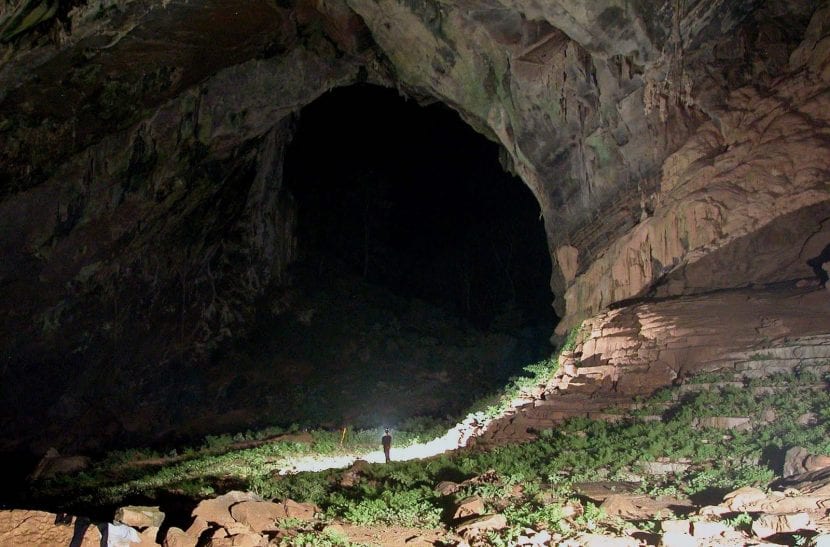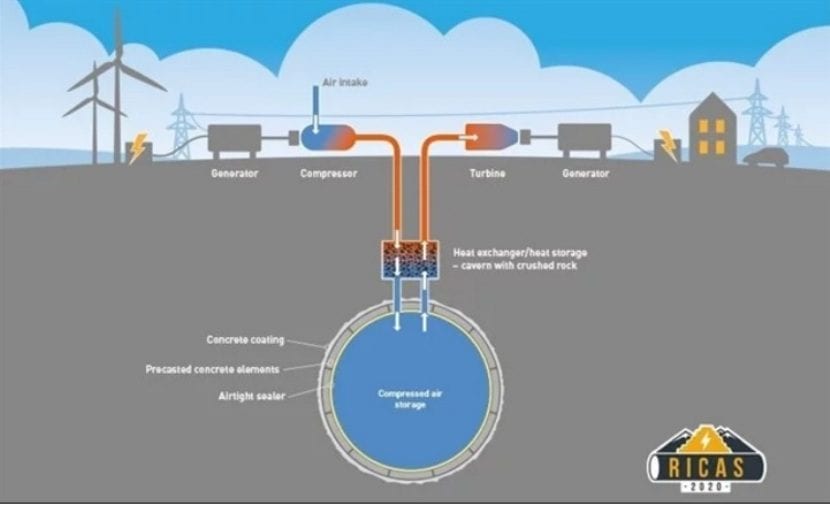
At this time it is investigating how dam air, European scientists intend to create a kind of battery that is capable of storing renewable energy, that is, compressed air storage to generate electricity.
The research project called as RICH 2020, predicted by the European Union, what it claims is that the caverns sealed and in disuse found all over the world could be perfect places for air storage.
The main problem that some renewable energies have, like the wind and the Sun, is that energy has to be used when it is generated, so if in some moments it cannot be used should be stored.
With photovoltaic solar energy, this problem is "solved" (it can always be improved a lot), but what about the wind?
These energies are becoming more and more important and gain more strength in our lives, which means that we will have the growing need for energy storage facilities. And here comes the problem.
After several studies it has been concluded that the cheapest method is to use hydropower reservoirs as batteries.
What it means is to generate electricity using (when energy is scarce) the stored water to later pump the water when there is surplus renewable energy.
Drawback? It would only be feasible for mountainous regions like Norway or other countries but what about countries that cannot use water?
RICH 2020
This is the answer to the RICAS 2020 project (adopted in some places) and it is only about use surplus energy to compress the air, and this is store it in an underground cave.
When it is necessary to obtain energy, the air is released through a gas turbine that will generate electricity.
Operation
The laws of nature or physics, whatever you want to call it, make this air storage system work.
To give you an idea It is the same operation as a bicycle pump.
The comprehension process makes the air gets hot. Bicycle pumps compress the air in order to increase tire pressure and by doing so, it also causes the pump to heat up.

Giovanni Perillo project director of SINTEF's contribution to RICAS 2020 and Norwegian project partner states that: “The more heat of compression the air has retained when it is released, the more work it can do as it passes through the gas turbine. . And we think that we will be able to conserve more of that heat than current storage technology can, and thus increase the net efficiency of the storage facilities. "
Some problems
The United States and Germany are home to the largest compressed air “stores”. They are underground chambers created in salt formations.
They can store a lot of air but have the problem of losing a large proportion of potential energy of compressed air since they do not incorporate a good system to store the heat produced during the air compression stage.
The solution for RICAS 2020
The solution that RICAS 2020 researchers have for future underground storage caverns and thus being able to reduce these losses consists in that the path that the hot compressed air has to travel has to pass through a separate cavern filled with crushed rock.
Later the already hot air, it will heat the rock which will retain a large proportion of the heat generated.
Thus, cold air is stored in the main cavern and when it is subsequently returned through the crushed rock to be used for electricity generation, the flow of air is reheated by rocks.
Thus, to end the hot air, it is later expanded through the turbine in charge of producing electricity.
Result
It is estimated that this innovation could raise system efficiency by around 70-80% as explained by the SINTEF project manager.
Although in most existing storage locations the figures they are no better than 45-55%.
This means that the energy generated by this process it's only half from which it was initially used to compress air.
Perillo (project manager) says: “The project is based on the belief that our solution will offer better energy storage than batteries can provide, thanks to its longer service life and lower capital cost per kWh of energy stored. We also hope that it can be used virtually regardless of the type of geological formation available. "
With the relevant research and new ideas that will emerge, will this be possible?
But why not adapt the system for home use, on a small scale?
It is cheaper to store the surplus of a particular photovoltaic installation with compressed air than to do it with batteries. And a compressor-generator and a 200 bar tank tube would suffice.